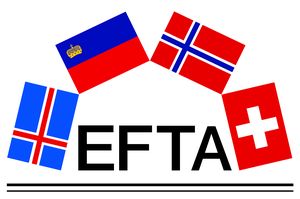
European Free Trade Association (EFTA)
Association européenne de libre-échange (AELE)
Search Open Yearbook
This information is part of the Open Yearbook, a free service of UIA's subscription-based Yearbook of International Organizations (YBIO). It includes profiles of non-profit organizations working worldwide in all fields of activity. The information contained in the profiles and search functionality of this free service are limited.
The full-featured Yearbook of International Organizations (YBIO) includes over 77,500 organization profiles, additional information in the profiles, sophisticated search functionality and data export. For more information about YBIO, please click here or contact us.
The UIA is a leading provider of information about international non-profit organizations. The aim of the Open Yearbook is to promote the activities of international non-governmental organizations (INGOs) and intergovernmental organizations (IGOs).
Contact Details
URL: https://www.efta.int/
Facebook: https://www.facebook.com/eftasecretariat
Bluesky: https://bsky.app/profile/eftasecretariat.bsky.social
LinkedIn: https://www.linkedin.com/company/efta
Instagram: https://www.instagram.com/eftasecretariat/
Youtube: https://www.youtube.com/user/EFTAvideo
Founded
1960-01-04 Stockholm Sweden
History
Available with paid subscription only.Aims
Promote free trade and economic cooperation between its members, within Europe and globally.
Events
55 past events available with paid subscription only.Activities
Available with paid subscription only.Structure
Available with paid subscription only.Languages
Available with paid subscription only.Staff
Available with paid subscription only.Finance
Available with paid subscription only.Relations with Inter-Governmental Organizations
Special status with: C-XC3023 - OECD. Participates in the activities of: E-XE3381 - UNCTAD.
Links with:
- D-XD0165 - ASEAN
- C-XD2469 - Asia-Pacific Economic Cooperation (APEC)
- F-XT9292 - Central European Free Trade Agreement (CEFTA)
- E-XE5349 - Conference of European Statisticians (CES)
- D-XD0435 - Council of Europe (CE)
- E-XE0669 - European Economic and Social Committee (EESC)
- F-XF2419 - European Environment Agency (EEA)
- F-XF0667 - European Parliament (EP)
- D-XD4489 - European Patent Office (EPO)
- F-XF5235 - NAFTA Secretariat
- D-XD2984 - Nordic Council (NC)
- F-XE8849 - Parliamentary Assembly of the Council of Europe (PACE)
- E-XE7358 - Statistical Office of the European Union (Eurostat)
- B-XE3386 - UNIDO
- F-XF2671 - Union internationale pour la protection des obtentions végétales (UPOV)
- E-XE6309 - United Nations Commission on International Trade Law (UNCITRAL)
- E-XE4176 - United Nations Economic Commission for Europe (UNECE)
- B-XB0462 - World Customs Organization (WCO)
- Observer status with: World Intellectual Property Organization (WIPO)
- Accredited by: United Nations Framework Convention on Climate Change - Secretariat (UNFCCC)
- Instrumental in setting up: Convention on Jurisdiction and the Enforcement of Judgements in Civil and Commercial Matters (Lugano Convention)
- Observer status with: World Trade Organization (WTO)
- Cooperates with: Gulf Cooperation Council (GCC)
- Cooperates with: Southern African Customs Union (SACU)
Relations with Non-Governmental Organizations
Agreement with: D-XD0631 - Comité européen de normalisation (CEN).
In liaison with technical committees of: B-XB2314 - International Organization for Standardization (ISO).
Observer to: D-XD3123 - European Federation of National Associations of Measurement, Testing and Analytical Laboratories (EUROLAB).
Close contacts with other European standardization organizations, especially: D-XD0634 - European Committee for Electrotechnical Standardization (CENELEC), F-XF4529 - European Cooperation for Accreditation (EA) and D-XE5922 - European Telecommunications Standards Institute (ETSI).
Links with:
- D-XD3970 - Association of the European Self-Care Industry
- D-XD4993 - Association européenne pour la coordination de la représentation des consommateurs pour la normalisation (ANEC)
- D-XE3351 - BUSINESSEUROPE
- G-XG2068 - Centre for International Cooperation and Development (CICD)
- D-XD0657 - Comité européen des constructeurs d'instruments de pesage (CECIP)
- D-XD0651 - Conseil européen de l'industrie des peintures, des encres d'imprimerie et des couleurs d'art (CEPE)
- E-XM0854 - European Trade Union Institute (ETUI)
- D-XD2089 - European Travel Retail Confederation (ETRC)
- E-XD3364 - Fédération européenne des retraités et des personnes âgées (FERPA)
- B-XB1490 - International Chamber of Commerce (ICC)
- C-XC1800 - International Electrotechnical Commission (IEC)
- B-XB2028 - International Federation of the Phonographic Industry (IFPI)
- F-XF2664 - WELMEC
Publications
Available with paid subscription only.Members
Available with paid subscription only.Active Areas & Regions
Available with paid subscription only.Type I Classification
Available with paid subscription only.Type II Classification
Available with paid subscription only.Subjects *
UIA Org ID
XD0766
** UN SDGs are linked to the subject classification.
← return to your search page to find additional profiles.
UIA allows users to access and make use of the information contained in its Databases for the user’s internal use and evaluation purposes only. A user may not re-package, compile, re-distribute or re-use any or all of the UIA Databases or the data* contained therein without prior permission from the UIA.
Data from database resources may not be extracted or downloaded in bulk using automated scripts or other external software tools not provided within the database resources themselves. If your research project or use of a database resource will involve the extraction of large amounts of text or data from a database resource, please contact us for a customized solution.
UIA reserves the right to block access for abusive use of the Database.
* Data shall mean any data and information available in the Database including but not limited to: raw data, numbers, images, names and contact information, logos, text, keywords, and links.